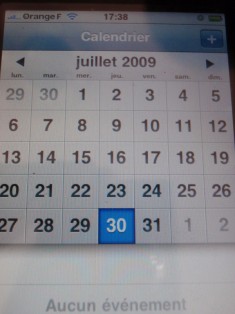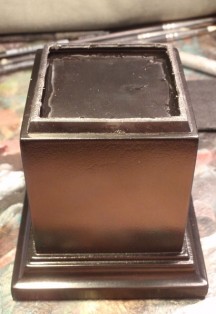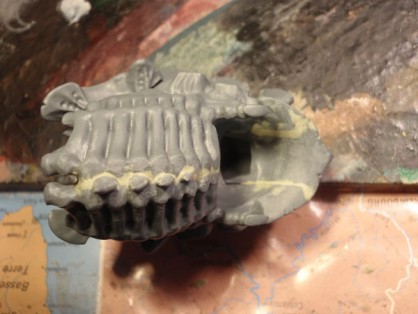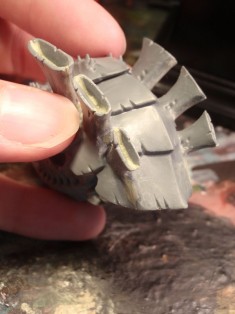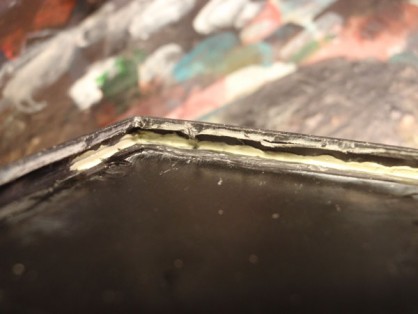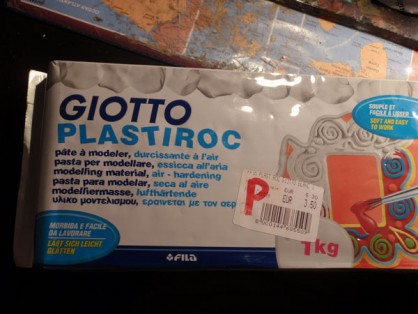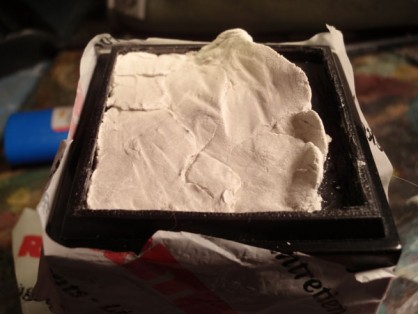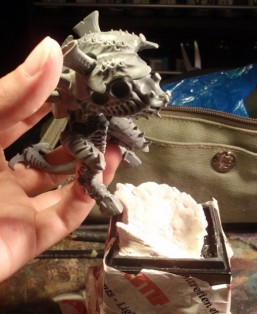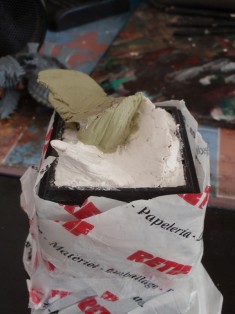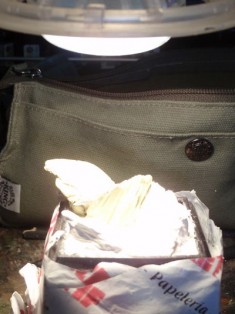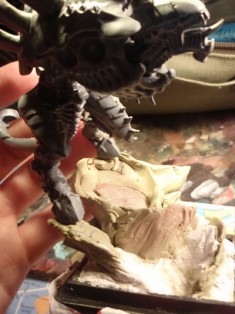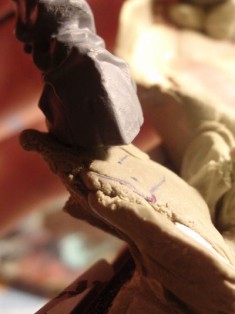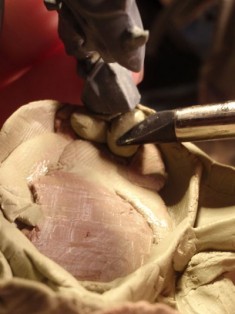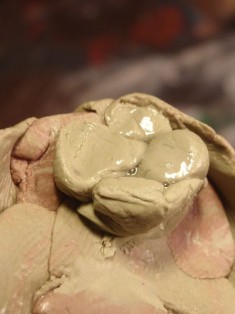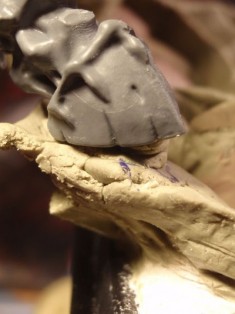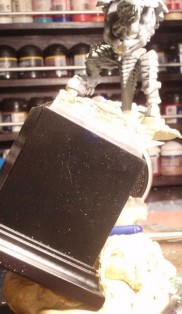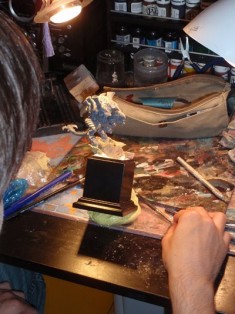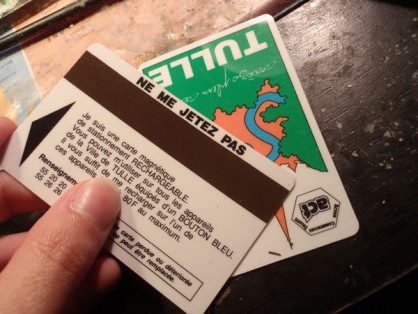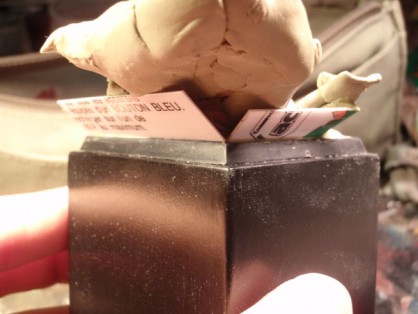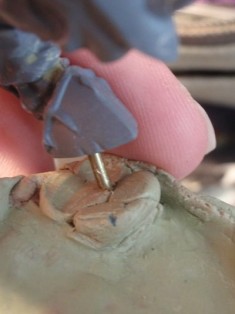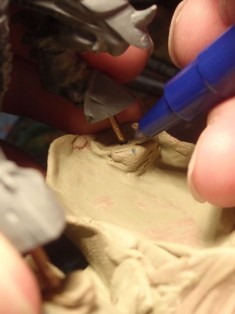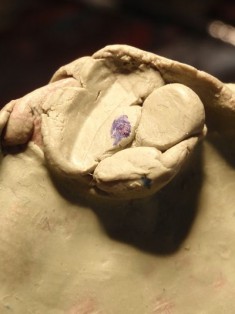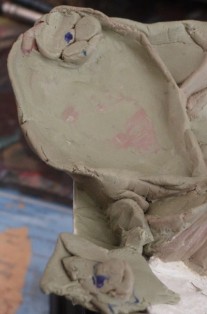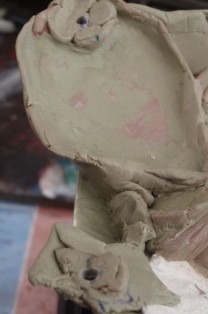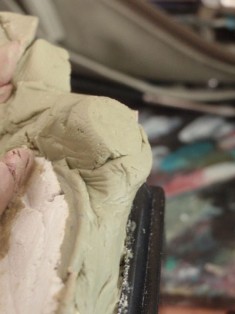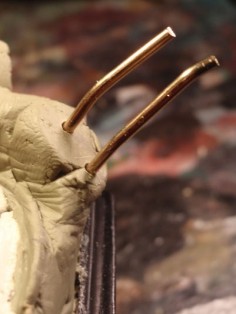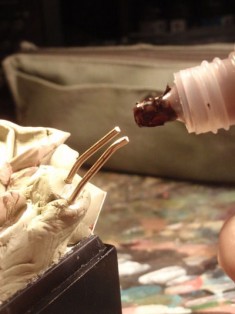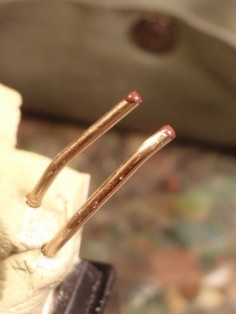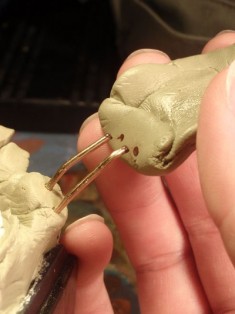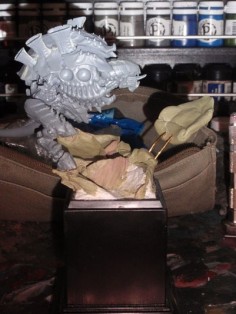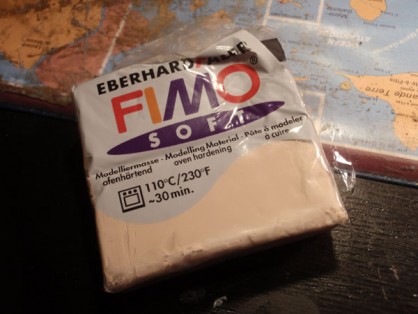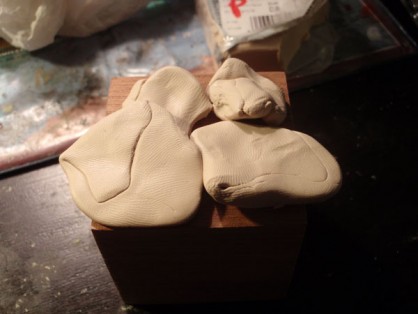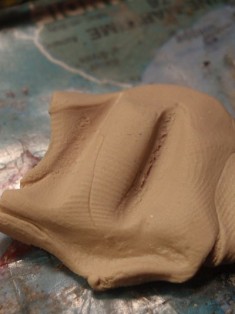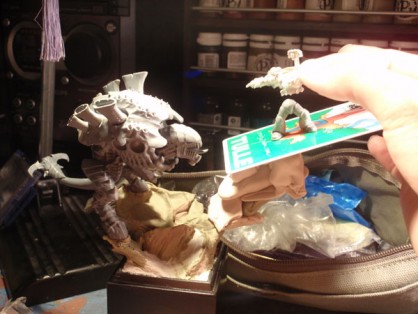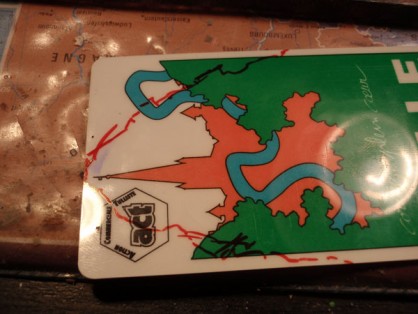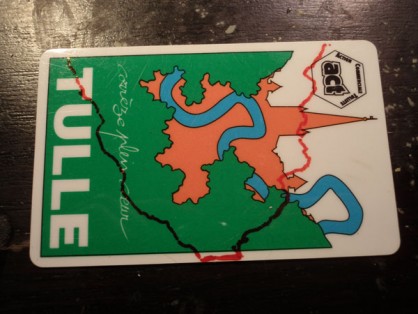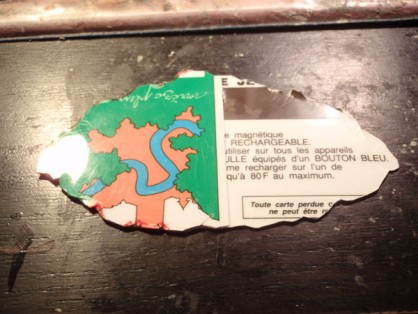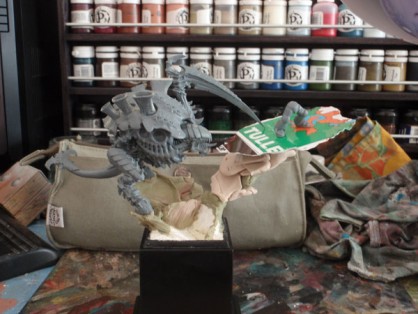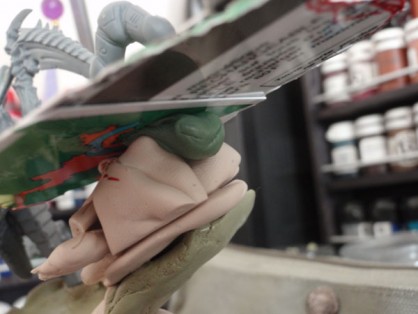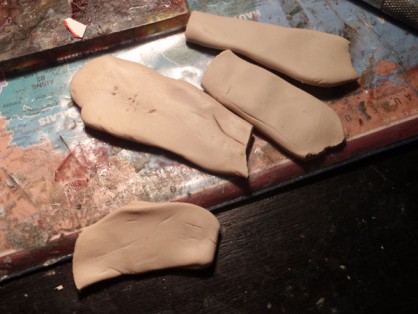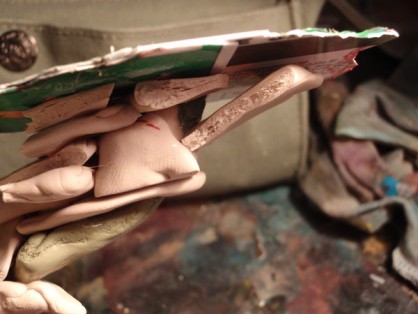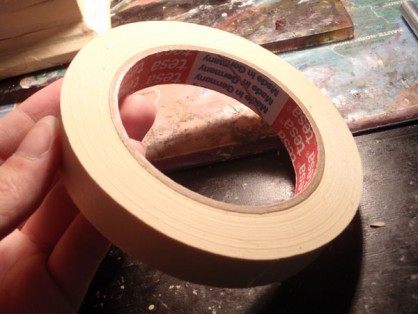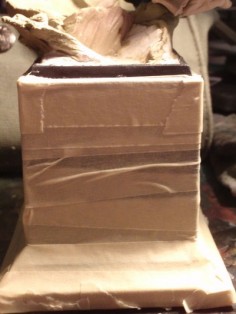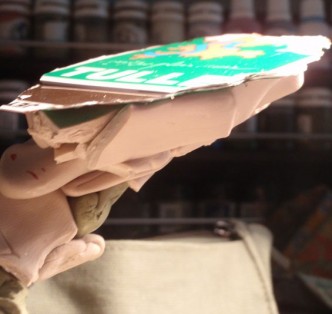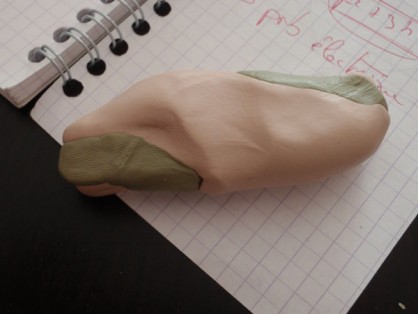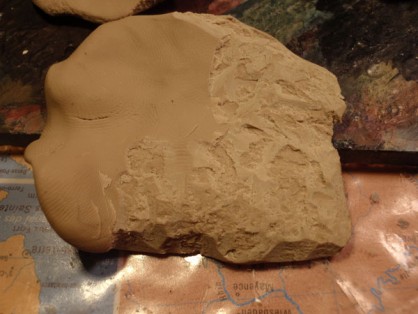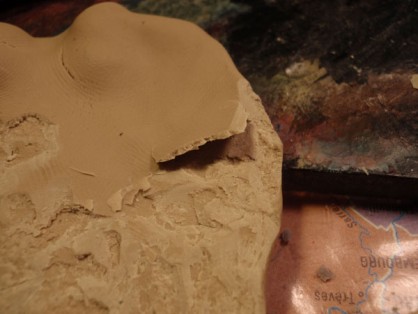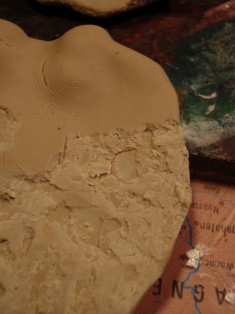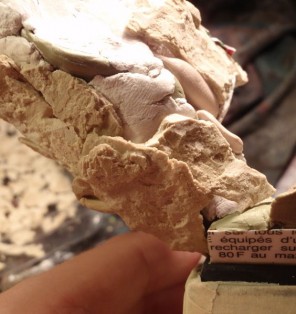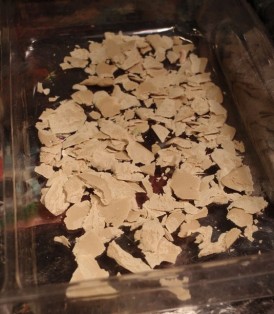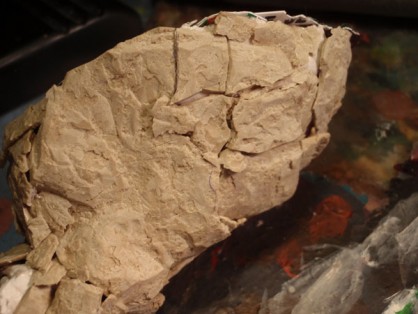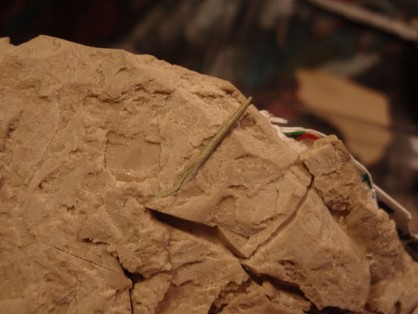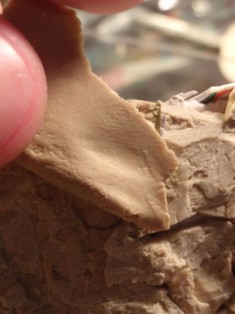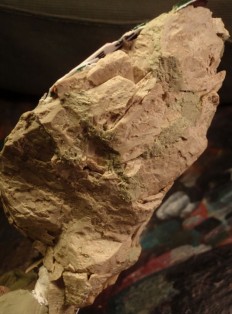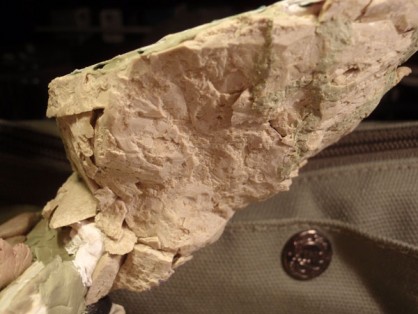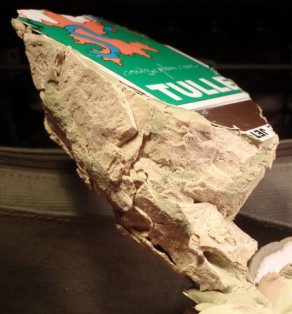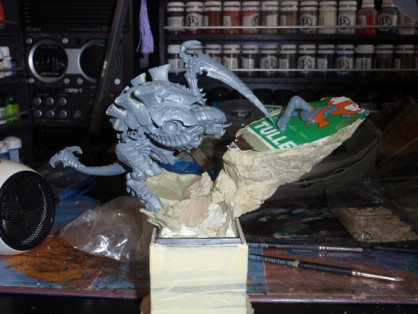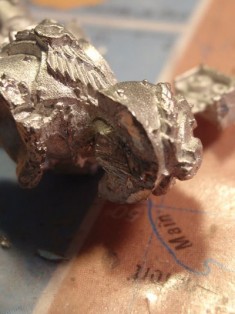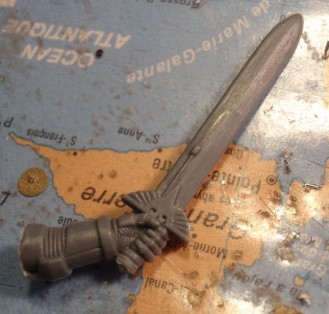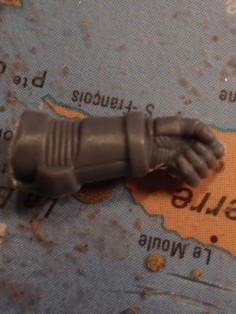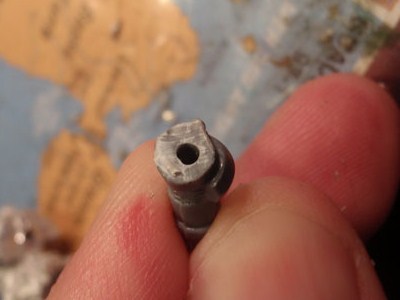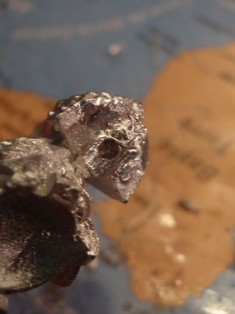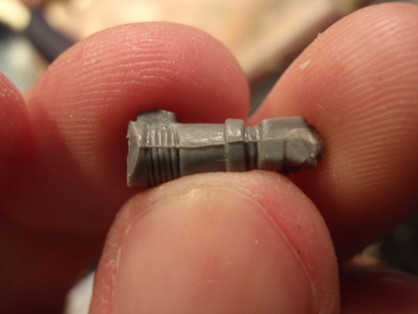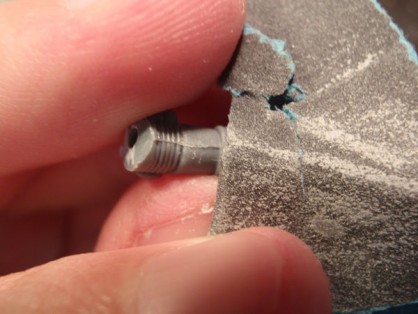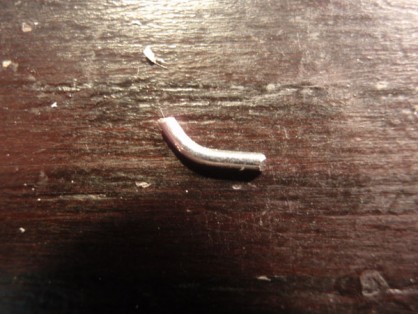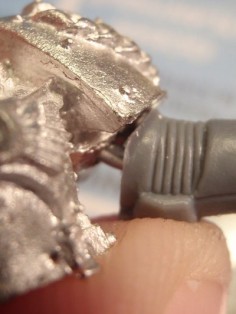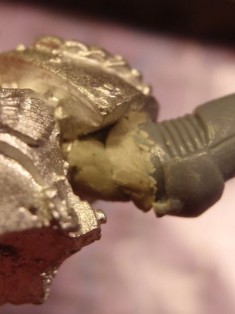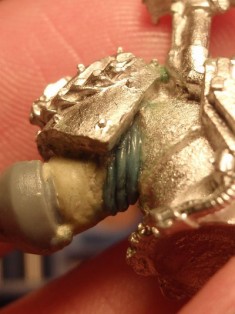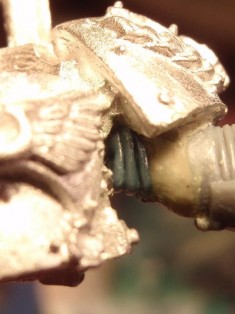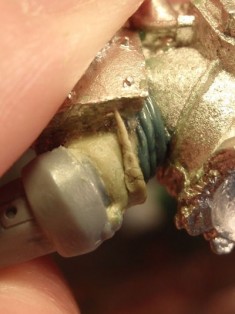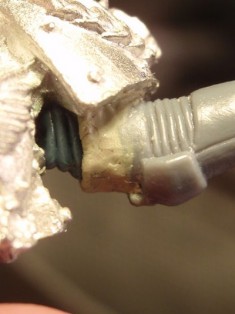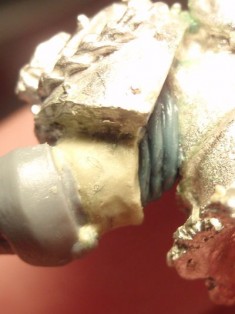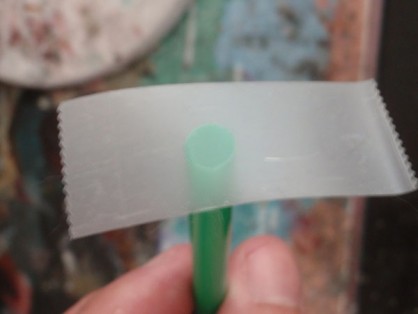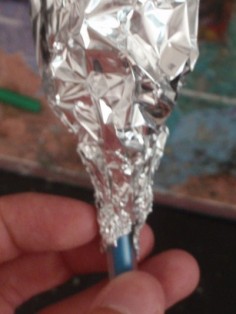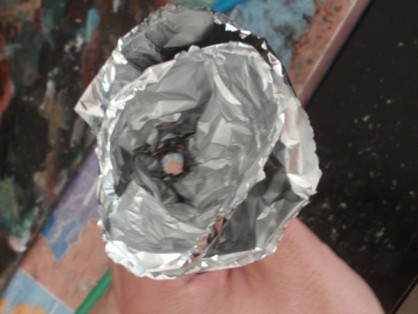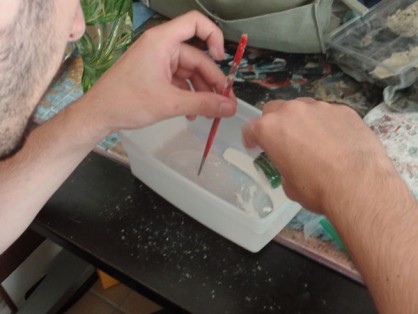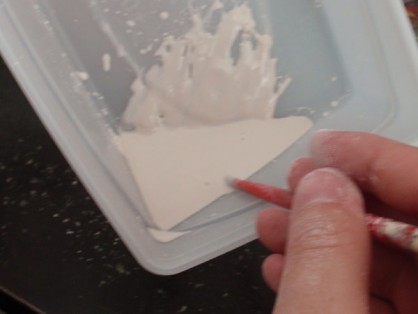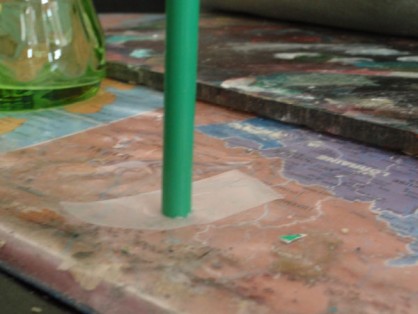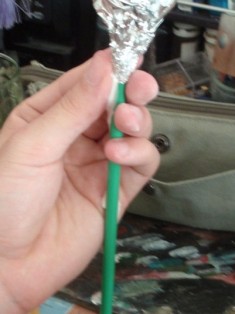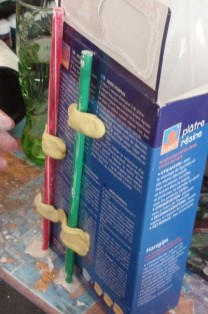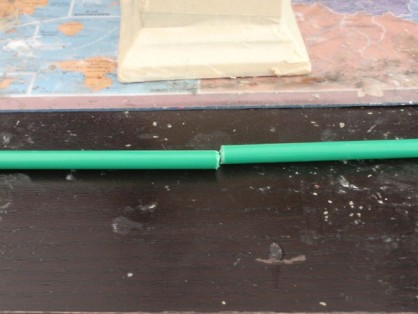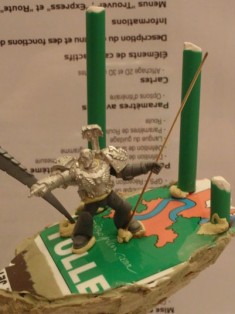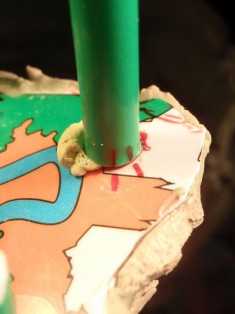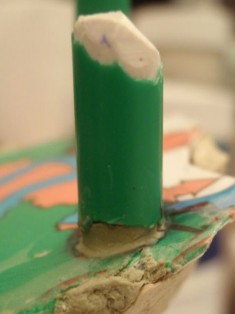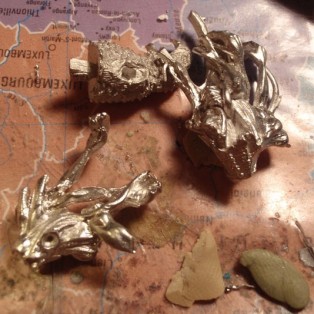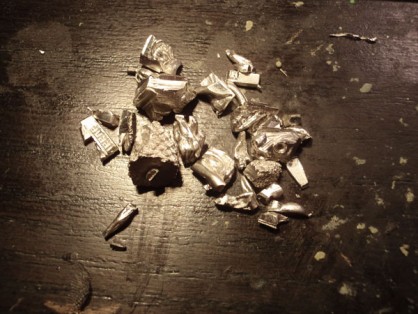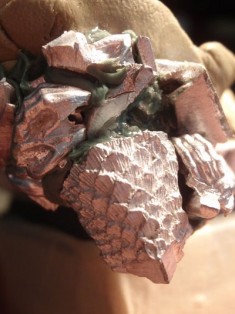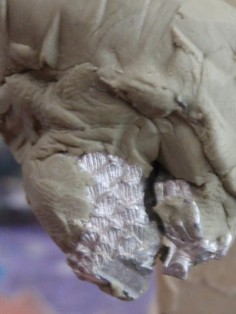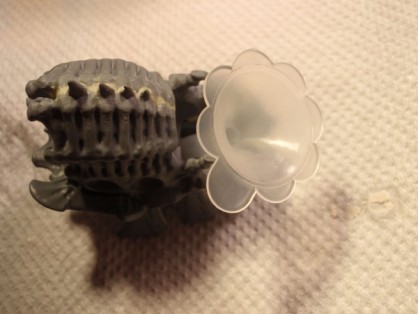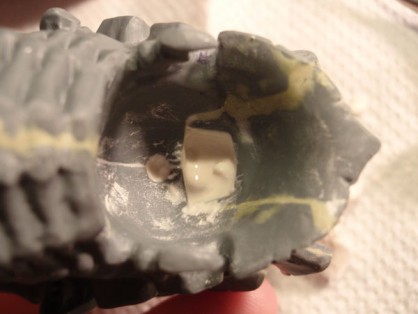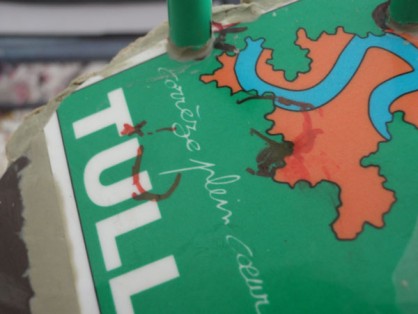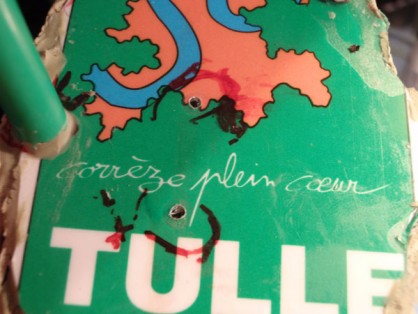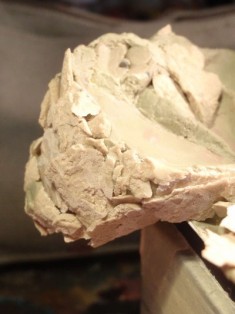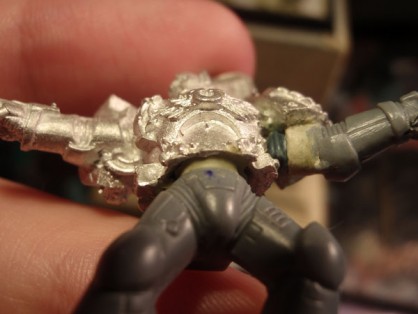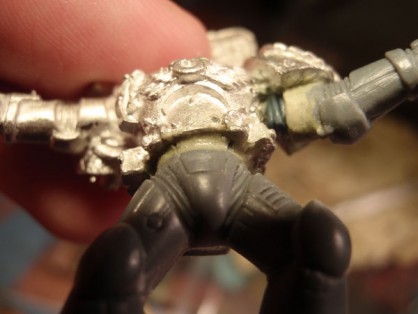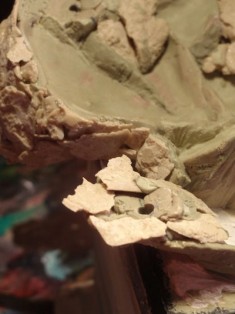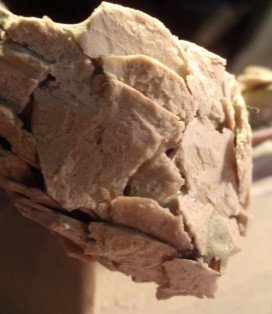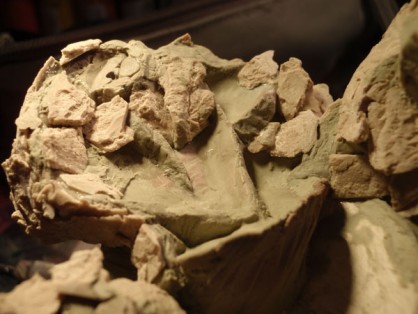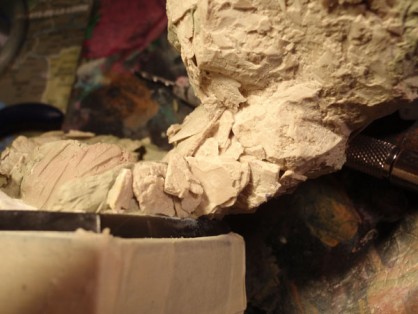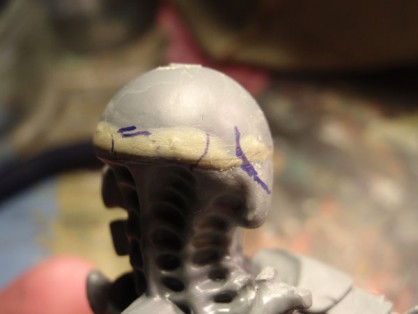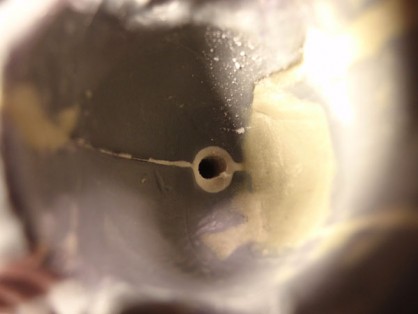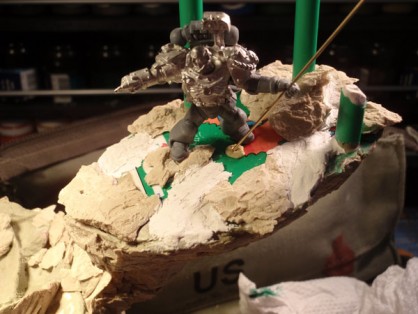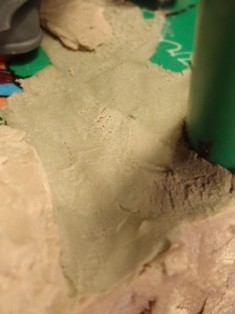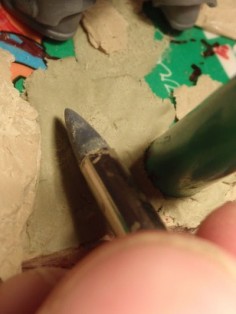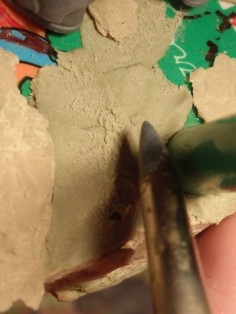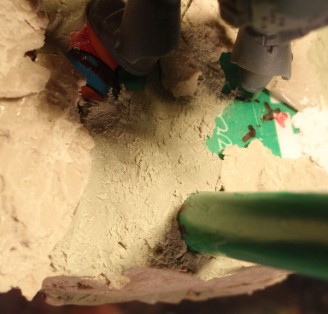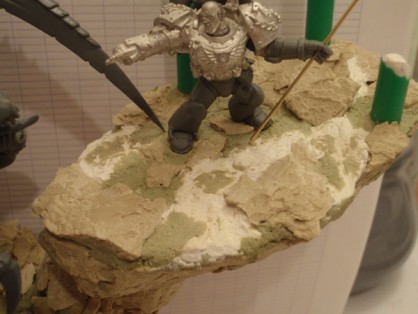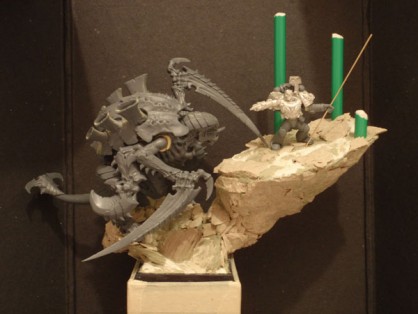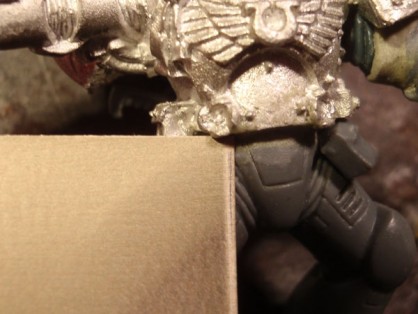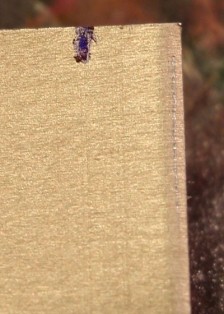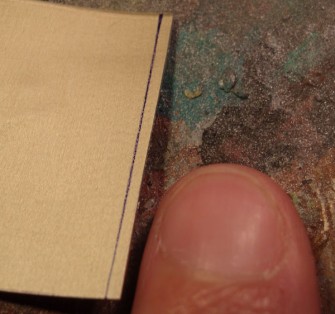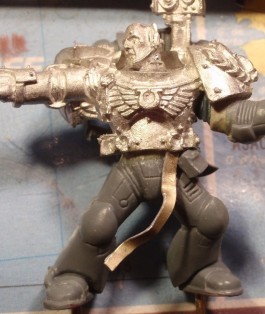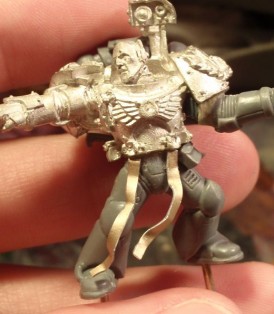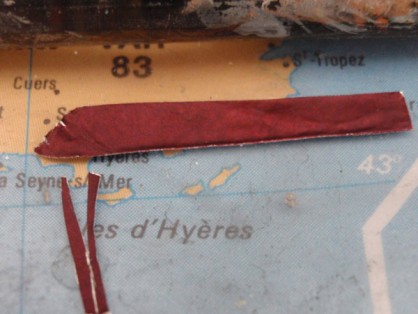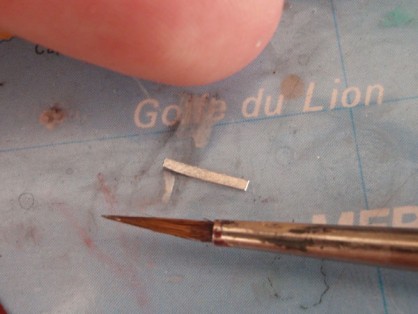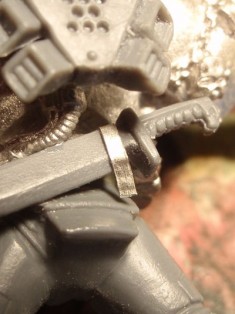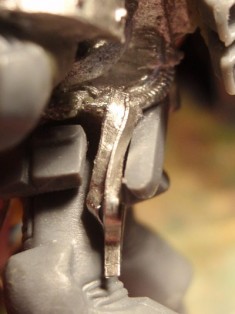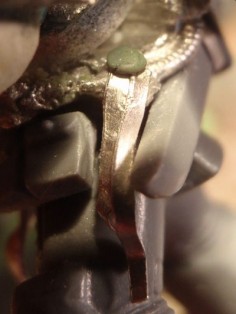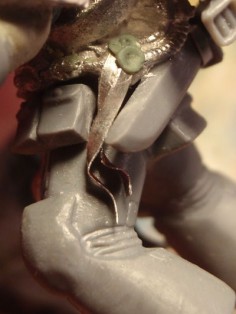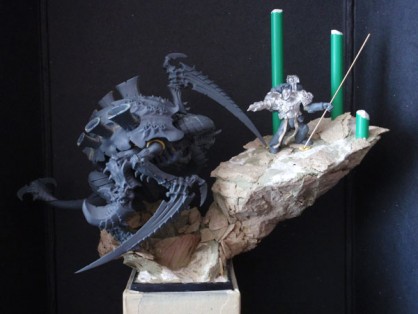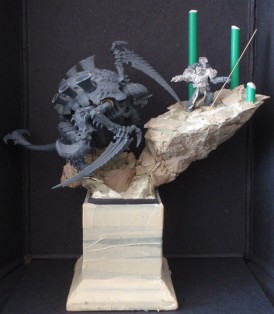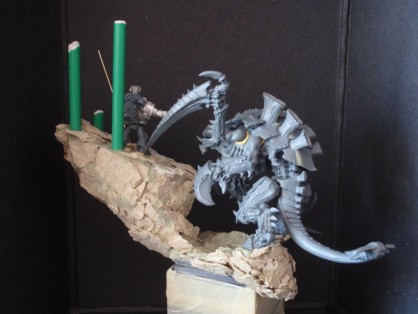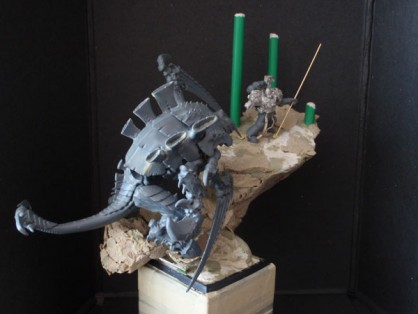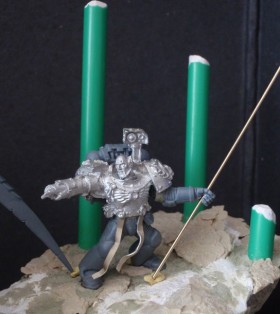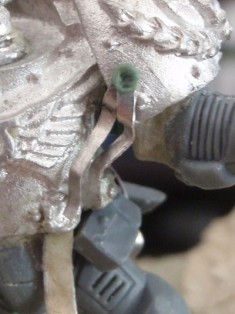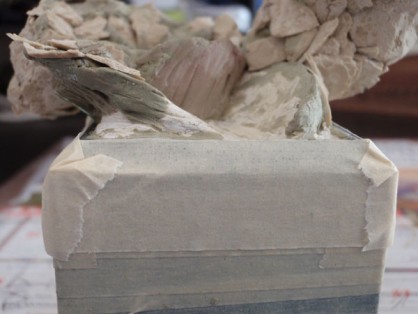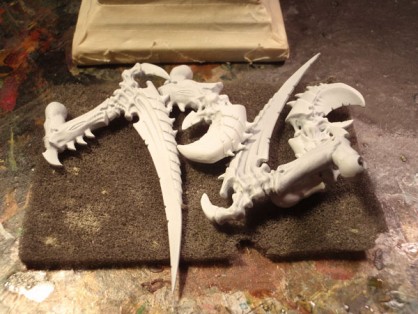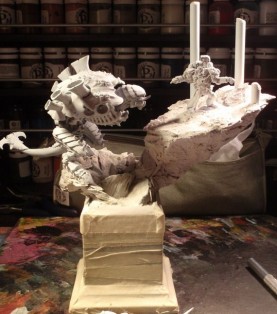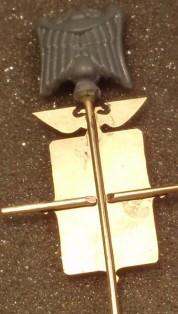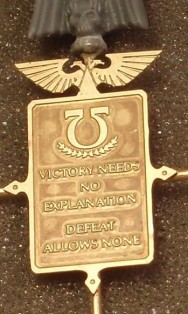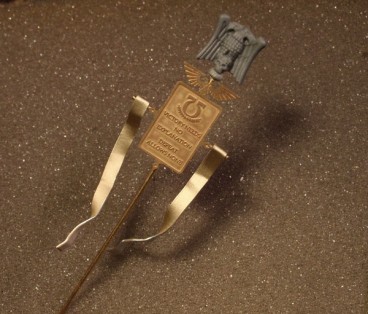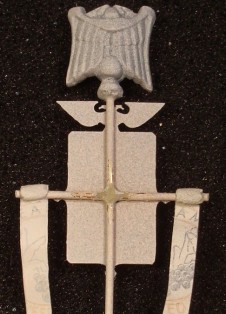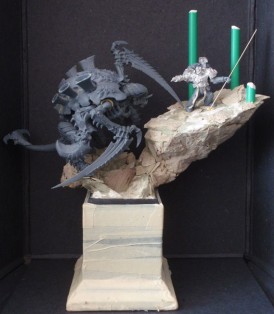Thanks to Mathieu Fontaine, for the whole traduction of this step by step. Again, you done an incredible job, i can only be thankfull for this for maybe eternity ![]() !
!
Link to:
Genesis & building, The Carnifex, The Space Marine, The base, The end.
Genesis
Before getting into the thick of the subject, it appears necessary to explain the reasons behind this diorama. First, I wanted to produce an entry that would stick to the GW universe for the Golden Demon UK 2009. After brainstorming I finally opted for the most logical and less original idea; an Ultramarine facing a Tyranid, more precisely a Carnifex. Everything would be painted with colors as close as possible to the official GW color scheme.
A static confrontation, during which the opponents stare at each other in the blank of the eye, appeals more to me. A Western like duel it will be.
In order to stick to the theme, the confrontation would take place on the Ultramarines home world, Macragge, during the invasion by the Tyranids in 745.M.41. In this way the duel becomes logical and realistic. Macragge is a rocky and icy planet. The base will therefore have these elements. Having not realised such type of base in a long time it would be a chance to once again play with these texture effects.
Once the base established, we had to think about the role of the characters. The Marine rapidly became a sort of Imperial border guardian which would be portrayed by marble columns. He would be armed with a knife and will have to proudly hold a Roman Aquilifer banner. Isn’t it mandatory for a symbolic Ultramarine border guardian ?
No? Whatever… !
The carnifex became the villain aggressor stopped at the bottom of the cliff, resting on rocks and ice and defying the Marine with a sharp scream.
The final argument to realise this diorama was the beauty of the Carnifex kit sculpted by Jess Goodwin as well as the desire to rekindle myself with painting blue and space marine.
Now that the chit chat is done let’s start this step by step !
The construction
First picture, first impression. I start roughly two months before the event! Congrats Julien!
I start by cutting my square base by removing the top from it. It is then glued to the display base.
We then have to prepare the minis. I assemble the kit, prepare and remove the molding lines with sanding paper and fill the joints between the various elements with Yellow-Grey Milliput.
I apply a joint of Milliput between the gaming and display base in oder to have a perfectly tight joint. Since resin will be poured, I prefer to play on the safe side.
The resin is one of the last steps of the project and being really tight on time I cannot take any risk that might destroy the base a few days before the contest. We have to plan cautiously every step.
I start by posing a few masses with Plastiroc, an economic paper based paste (5$ per kilo). It can be smooth with water and is easily workable. The only inconvenient is that it tears really easily so do not use it as a support for a heavy piece.
I test the position of the Carnifex in relation with the volumes of the base.
As mentionned above, I cannot trust weight on the Plastiroc. Considering the chosen position of the Carnifex I need to tear off some plastiroc to replace it with Milliput to avoid the risk of seeing my surface break under the weight.
And to speed up the drying process nothing better than lamps!
I keep building the base with Milliput. I mark the spot for the feet of the carnifex at the desired spot. This will allow me to define precisely where the monster will be placed.
In the drawn areas I applied small balls of Milliput.
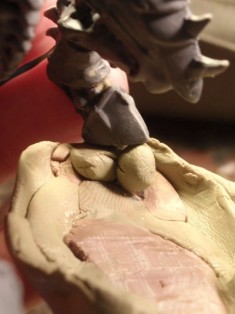
I apply water on them before posing the feet of the Carnifex. Once wet the Milliput will not stick to the surface allowing a proper imprint.
Once dried, the volumes of the hooves are used as guides, once again, to facilitate the final assembly of the duel.
With some poster paste I place the base in a way that, when seated, I see it in the same way as the spectator will see it. This allows me to build the composition without mistake.
With plasticard I build two boxes for two sides of my base. One will be used to pour resin and the other to build rock with touching the sides of the plastic base.
Using a pin vise and brass rods I pin the Carnifex.
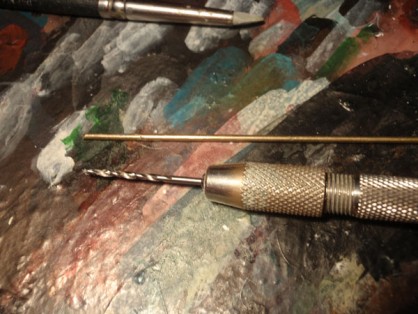
Holes are done in the hooves and rods are inserted with glue at the desired length.
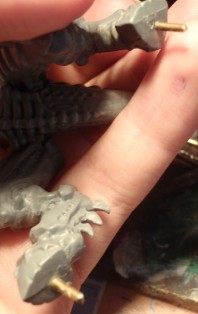
Using my marks, I place the pinned feet in the desired areas making sure the spot and angle are right.
With a pen I mark the spot of the rods.
And I drill.
The Carnifex can be perfectly pinned down without issues. The cliff on which the marine will be places is the next step. A pattern is made of Milliput which will hold the structure.
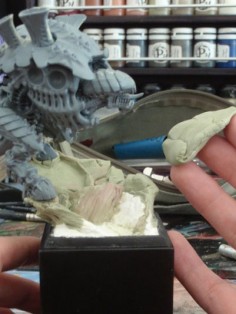
I leave a smooth side on insertion level of the cliff on the side of the Carnifex. This will allow me to place rods in order to solidify the cliff avoiding, again, any risk of cracks due to the weight.
Paint is applied to the extremities of the rods.
I then print the position on the cliff.
I then simply have to drill and assemble.
Pieces of FIMO are prepared; some receive the imprint of the rods supporting the cliff to the base.
I start to pose the masses of the cliff and test the position of the Space Marine. I bake the pieces of FIMO and glue them separately, since the base cannot go in the oven.
The top of the cliff will be created with plasticard. I draw the desired form with a permanent pen.
I cut and glue.
I continue with my composition tests.
The top of the cliff is fixed with green stuff.
New strands of FIMO are done and immediately baked.
I cut them in small parts and glue them in order to create the structure but mostly the form of the cliff. This allows me to keep empty spaces inside in order to avoid extra weight.
I mask the display base with tape. Since I’ll use resin and airbrush the tape will allow me to work easily without worrying about spills or overflow.
The form of the cliff before receiving the texture.
I prepare a mix of 1/3 Milliput and 2/3 FIMO. Once mixed, I prepare small pieces which I stick and form with those of the cliff.
Once baked, you simply have to rip the surface with an exacto piece by piece. I cut more or less into the paste to avoid an even surface. The mix allows a rock like texture without too much effort which is useful when we are short on time.
I simply need to glue the rock piece by piece. Be careful, the placement needs to be planned in order to keep a realistic and coherent effect and most importantly that will follow the form of the cliff in order to respect the composition.
We keep the small leftovers to patch the joint.
We need to fill the gaps, with the leftover.
Small strands of Milliput are placed in the gaps. With the help of the small pieces left I print the texture of the rock.
The joints are filled by keeping the same texture.
The left arm of Chronus (Warhammer 40.000, Games-Workshop) is clipped.
The left arm holding a sword in the Space Marine Commander kit is used. The sword and pommel are clipped and a hole is drilled in the middle of the hand to hold the banner pole.
The left shoulder and arm are drilled in order to be pinned.
With sandpaper (400) I remove molding lines.
The two parts are glued together and the joints are recreated with Milliput.
With Green Stuff I redo the joints between the torso and the armour plates of the arm.
By adding small strands of milliput that are sanded once dried I recreate the armour plates.
For the columns I simply poured plaster inside straw selected for their diameter. Before pouring I made sure to seal the bottom part with tape.
A funnel made of aluminum foil is used to pour the plaster.
The plaster (a resin plaster from Gédéo) is mixed with water to obtain a thick paste but still watery enough to be easily poured.
The resin plaster is then poured in the straws.
They are left to rest vertically until cured. The curing time is supposed to be around 5/10 minutes. To be safe I give them half an hour.
Once dried, the straws are cut in three different lengths. They are fixed with tac to the base to be able to test their position and check if the heights are correct or need to be shortened. The top of the straws are cut with a scalpel to obtain a realistic rock break effect.
Once the position is determined I mark the spot with a permanent marker.
The columns are then pinned and glued to the top of the cliff following the marks and the joints are filled with Milliput.
We all have a load of figurines that were chopped in pieces to gain a hand here or another detail there. Figurines that will never be painted. Believe me, I have a huge quantity of these and I am sure you do as well.
In order to gain weight on the right side of my piece (the left side for the spectator), here is what happens to these figurines which were doomed to accumulate dust.
They are drowned with Green Stuff and then Milliput.
Still in order to gain weight on the right side, the torso of the carnifex is filled with plaster. It is poured using a funnel usually made for perfume. After the pain of pouring the columns I can only thank my sweetheart to provide the ideal solution. What would we do without our loved ones? Love them because we would not go far without them.
Meanwhile the position of the marine has been defined. As usual I mark the emplacements and proceed as with the Carnifex to pin the marine in the base.
I then glue rocks on the addition on the right side and totally cover these cruelly chopped figurines.
It is time to move to the marine. I opt to make it taller. I rod is glued between the torso and waist in order to leave a space between the two parts. The gap is filled with Milliput.
Paste is added in order to re-sculpt the armour plates.
Small pieces of rocks is added everywhere. We are getting close to the end of the build.
The position of the carnifex torso is reworked in order to reduce the curve and reposition him toward the space marine. I also make sure that the sights of the two characters are face to face. Western spaghetti power. To do that, specific joints of the backbone of the Carnifex are filled and the torso is drilled to a specific angle.
I work on the texture of the top of the cliff using Plastiroc but mostly my rock with milliput.
For the texture of the ground I first apply a light coat of milliput.
Then I rub the surface with a dry colour shaper, always in the same direction.
By repetition we obtain this:
I continue with the light transformation of the marine. I need to add long parchment at the bottom of the torso and under the original purity seal. To do so I salvage the lead sheet found on a rum bottle.
I place it under the seal and trace guidelines.
In order to do so I take into account the overall movement dynamics of the diorama imagining a wind blowing from the marine to the carnifex. This direction has a better narrative than the other. In this manner the parchments follow the descent of the cliff toward the carnifex. The sight stopping on the carnifex will therefore be naturally redirected toward the carnifex an effect that would not have been obtained in the opposite direction.
Other finer parchment are realised with lead sheet taken from wine bottle.
A purity seal is applied on them by posing a small ball of green stuff of the desired size and pressing in the center.
The only thing left is the banner and basecoat!
Masking tape is added on the side of the gaming base to protect it from the white basecoat. The arms will be basecoated separately in order to paint them apart granting better access to the different parts of the carnifex.
I end with the banner. On a brass rod I glue a symbol from ForgeWorld with a plastic imperial eagle symbol on top from the Space Marine command squad kit. In the middle of the FW plaque I glue two transversal bars to realize flying pennants.
The spaces between the bars are filled and the banner is basecoated.
We can move to the paint job!
15 to 20 hours over a month were necessary to build this duel.
Reflexion on the composition
I will end with a summary explanation of the work in order to emphasize the composition of the scene. First, the length of the cliff was calculated in relation with the length from the tip of the carnifex tail to the center of the plastic base. The height, width and deepness of the cliff were calculated along the proportion of the carnifex in order to keep a sense of balance and symmetry. The scene was conceptualized to fit in a virtual diamond. The axes of this diamond can easily be seen:
- Imaginary line created by the inclination of the cliff from its top to the middle of the plastic base.
- Inclination from the middle of the base to underneath the feet of the carnifex to the tip of its tail.
- From the tip of the tail, along the curve of the back of to the first column.
- From the top of the first column to the point of the cliff.
In this manner the sight of the spectator remains at the center of the scene. We can observe it on the final pictures. The inclination of the banner was also chosen in order to be parallel with the inclination of the cliff.
All of this is only a glimpse of the examples cited but I hope it will give you guidelines as to what need to be realised to direct the sight of the spectator in the desired areas. Obviously most of this work is not done consciously but by playing with the positions of the various elements until we obtain a pleasant result.
Link to:
Genesis & building, The Carnifex, The Space Marine, The base, The end.



